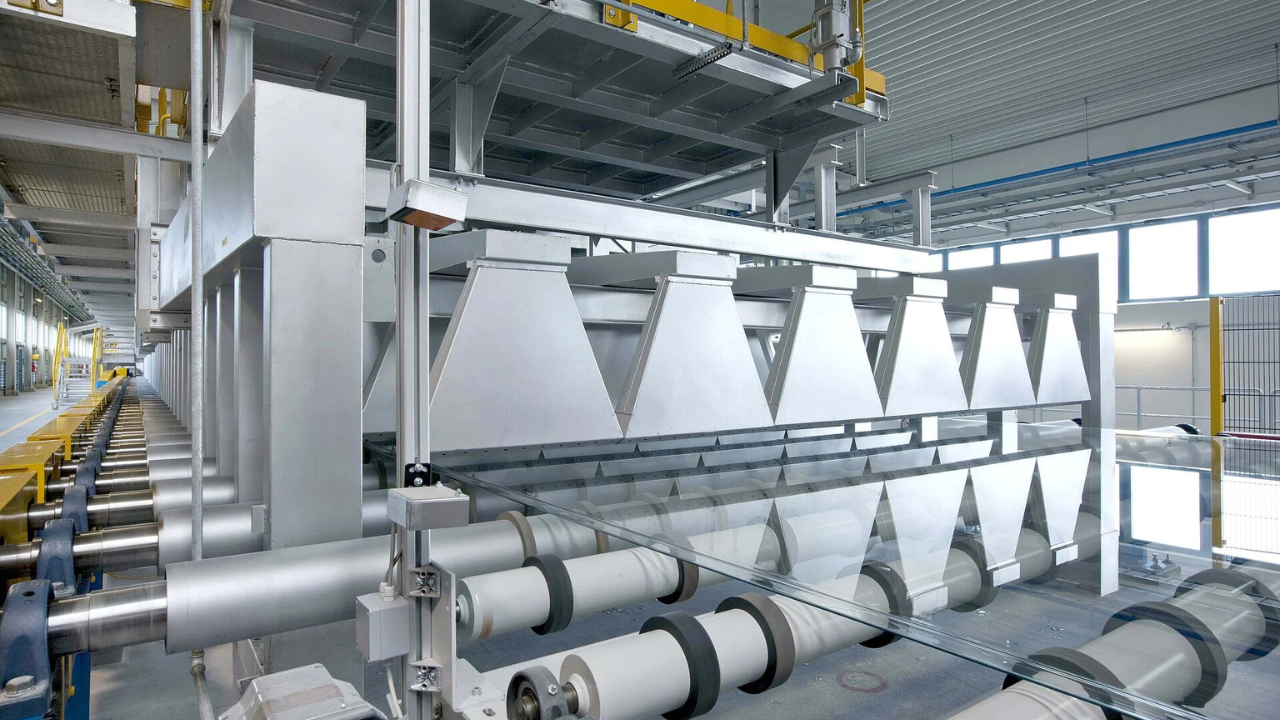annealer glass glassmaking world, creating beautiful and durable products is a complex and fascinating process. One of the most essential techniques employed in glass manufacturing is annealing. The role of annealer glass in transforming fragile, delicate sheets of glass into durable, robust products cannot be overstated. This article explores how annealing glass works, why it’s crucial in the glass industry, and its impact on various applications, from windows to glassware and automotive glass.
What Is Annealing in Glassmaking?
annealer glass is the controlled process of gradually cooling glass to relieve internal stresses. When glass is formed, it cools unevenly, leading to the formation of internal tensions. These tensions can make the glass prone to cracking or breaking. The annealer glass process ensures the glass achieves a uniform temperature and structure, improving its strength, durability, and overall quality.
The glass is typically placed in an annealing lehr, an industrial oven, or a kiln. Inside the lehr, the glass is heated to a specific temperature and then slowly cooled to room temperature. This controlled cooling process allows the molecules within the glass to relax and reorganize,annealer glass stress and creating a more durable product.
Why Annealing Is Crucial for Glass Durability
Glass remains susceptible to fractures and imperfections without annealing, rendering it unsuitable for specific applications. The role of annealer glass in making the material durable goes beyond simply ensuring the glass is free from cracks. It also helps enhance properties such as:
- Strength: Annealed glass is far more resistant to breakage than non-annealed glass. This strength is achieved by evenly distributing internal stresses, making the glass more challenging overall.
- Thermal Resistance: Annealing helps glass withstand rapid temperature changes, which is especially important for glass used in environments with common temperature fluctuations, such as windows and glass cookware.
- Improved Clarity: During the annealing process, residual stresses that could cause distortion or waviness in the glass are eliminated. This results in more precise, more aesthetically pleasing glass products.
- Uniform Thickness: Annealing also helps achieve a consistent thickness throughout the glass, preventing weak spots that may cause cracks under pressure.
The Annealing Process in Detail
The annealing process involves several key steps:
- Heating: Glass is first heated to a temperature just below its softening point, typically around 500°C to 600°C (932°F to 1112°F). This makes the glass malleable and allows internal stresses to be addressed.
- Soaking: Once the glass reaches the desired temperature, it is held at that temperature for some time to dissipate the stresses within it.
- Cooling: After soaking, the glass is gradually cooled at a controlled rate. The cooling process must be slow to prevent new stresses from forming.
- Room Temperature: Finally, the glass is cooled to room temperature. The glass should have a uniform structure at this stage and be much less likely to break or deform.
Applications of Annealed Glass
Annealed glass is used in various industries and products due to its enhanced durability. Some of the most common applications include:
- Architectural Glass: Windows, facades, and partitions are often made from annealed glass. It provides strength and clarity, making it ideal for commercial and residential buildings. Annealed glass can also be laminated or tempered to increase safety and security.
- Automotive Glass: Windshields, side windows, and rear windows are often made from annealed glass or undergo annealing as part of manufacturing. The automotive glass needs to be durable, and the annealing process helps ensure it can withstand the stress of daily use, including exposure to extreme temperatures.
- Glass Containers and Packaging: Annealed glass is used extensively to produce bottles and jars. The process strengthens the glass and improves its resistance to pressure, ensuring the containers are durable enough to hold products without breaking.
- Glassware: Many types of glassware, from drinking glasses to decorative items, are made using annealed glass. The process enhances these products’ strength and clarity, ensuring they are both functional and aesthetically pleasing.
- Solar Panels: Annealed glass is also used to produce solar panel covers. The strength and durability of annealed glass are essential to protect the delicate photovoltaic cells inside from environmental damage.
The Role of Annealing in Modern Glass Manufacturing
In today’s fast-paced manufacturing environment, the role of annealer glass is more critical than ever. Technology advancements have allowed for more efficient and precise annealing processes, leading to better-quality glass products and improved productivity.
Automated annealing systems, such as modern lehrs, ensure the process is consistent and energy-efficient. These systems can monitor and adjust the temperature and cooling rates in real time, which helps optimize the annealing process for different glass products. As a result, manufacturers can produce large quantities of high-quality glass with fewer defects and better overall performance.
The Environmental Impact of Annealing Glass
The glass industry has been working to make the annealing process more energy-efficient to reduce its environmental footprint. Traditional annealing systems consume significant energy to maintain the high temperatures required. However, modern technological advancements, including better insulation and more efficient heating methods, have helped reduce energy consumption.
Some companies are also focusing on using renewable energy sources in the annealing process. By integrating solar or wind power into their operations, these companies are making significant strides in reducing the carbon footprint of glass manufacturing.
Challenges in the Annealing Process
Despite its many benefits, the annealing process presents particular challenges. Achieving the perfect balance of temperature and cooling rate is essential, and any deviation can result in defects or subpar quality. Additionally, the energy required for annealing can make it expensive, especially for large-scale manufacturing.
Manufacturers continually refine their techniques to address these challenges and explore new materials and technologies. For example, researchers are investigating alternative glass formulations that may require less energy to anneal or achieve the same durability level with shorter processing times.
Conclusion
The role of annealer glass in the glass industry is indispensable. The annealing process transforms glass products from fragile, breakable items into durable, reliable materials suitable for a wide range of applications. From automotive and architectural glass to containers and glassware, annealed glass plays a crucial part in making everyday products more resilient and longer-lasting. As the industry continues to innovate, advancements in annealing technology will further enhance the quality and sustainability of glass manufacturing, helping to meet the growing demand for high-performance, eco-friendly glass products.
Frequently Asked Questions (FAQs)
1. What is the annealing process for glass? Annealing is the process of slowly cooling glass in a controlled environment to relieve internal stresses that can make it fragile and prone to breaking. This is done in an annealing furnace, where the glass is heated to a specific temperature and then cooled gradually.
2. Why is annealing glass essential? Annealing improves glass strength, thermal resistance, and clarity. It helps ensure that glass can withstand temperature changes, pressure, and daily use without cracking or distorting.
3. What are the typical applications of annealed glass? Annealed glass is used in various products, including architectural glass, automotive windows, containers, glassware, and solar panel covers.
4. How does annealing improve the quality of glass? By removing internal stresses and ensuring even cooling, annealing enhances the glass’s strength, clarity, and uniformity, making it more durable and less likely to break or deform under pressure.
5. Are there any environmental concerns associated with the annealing process? Yes, traditional annealing methods consume a significant amount of energy. However, modern advancements in energy-efficient technology and renewable energy sources are helping to reduce the environmental impact of the annealing process.
You May Also Read: https://ventsweekly.news/couchtuner-guru/



